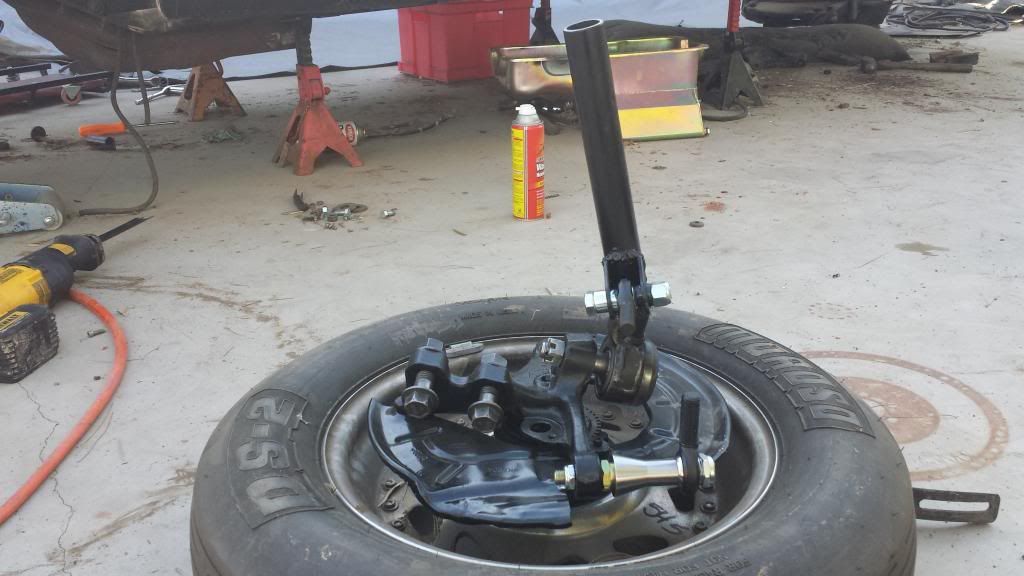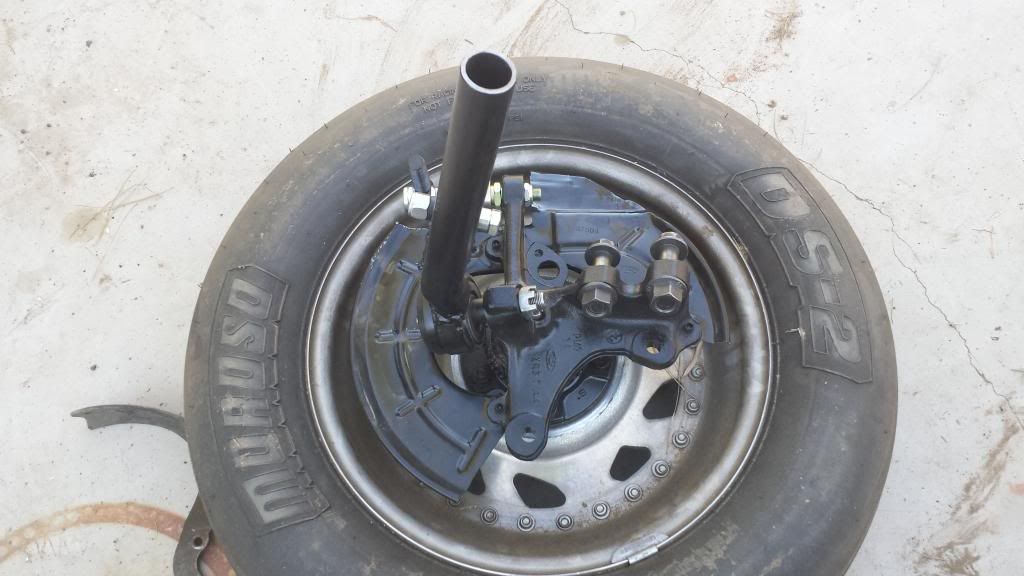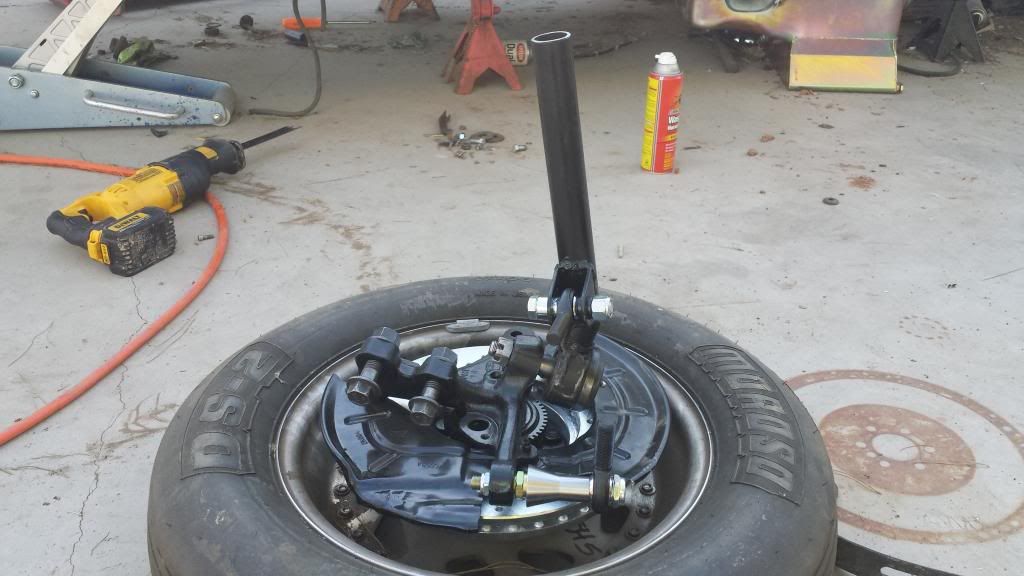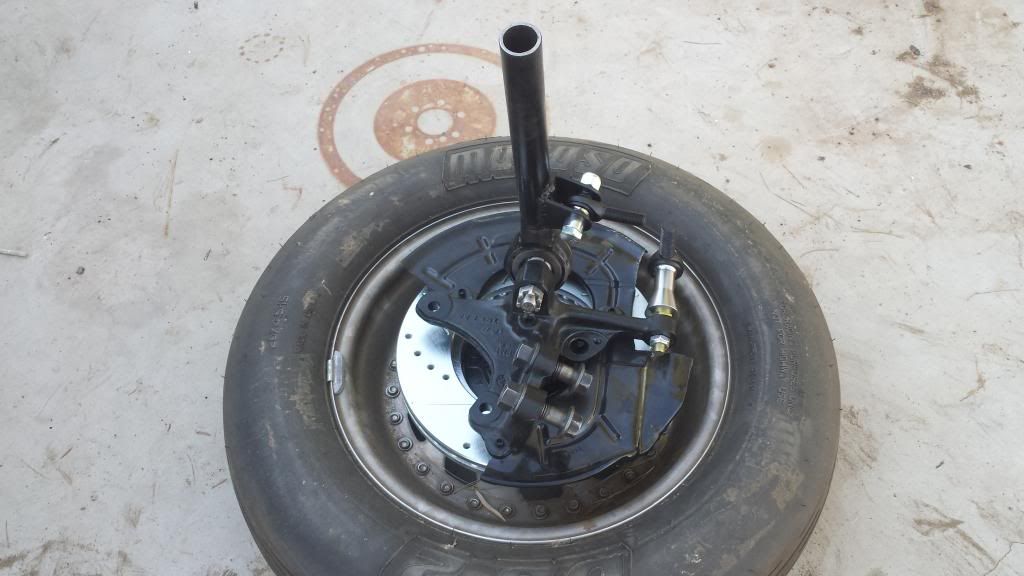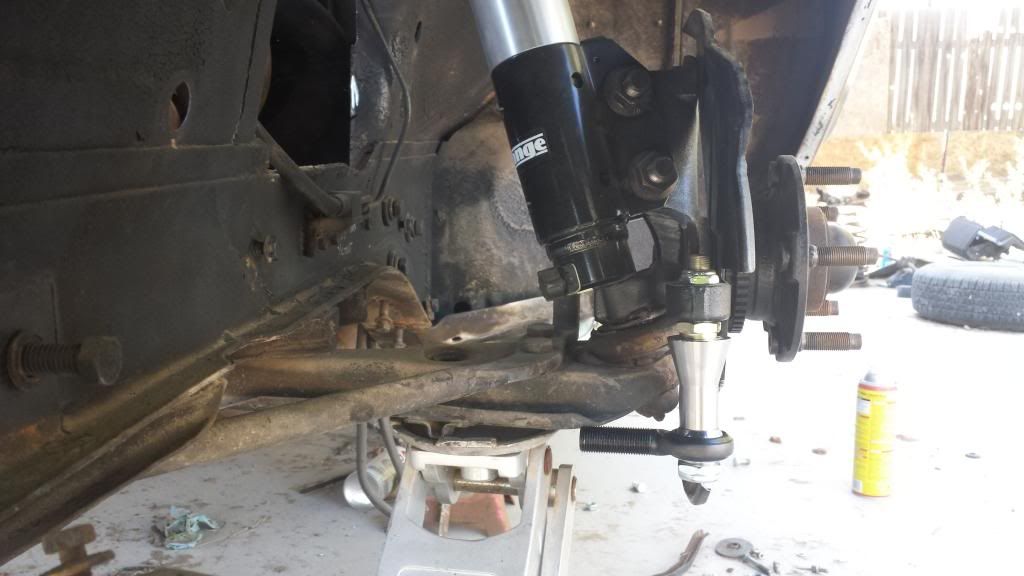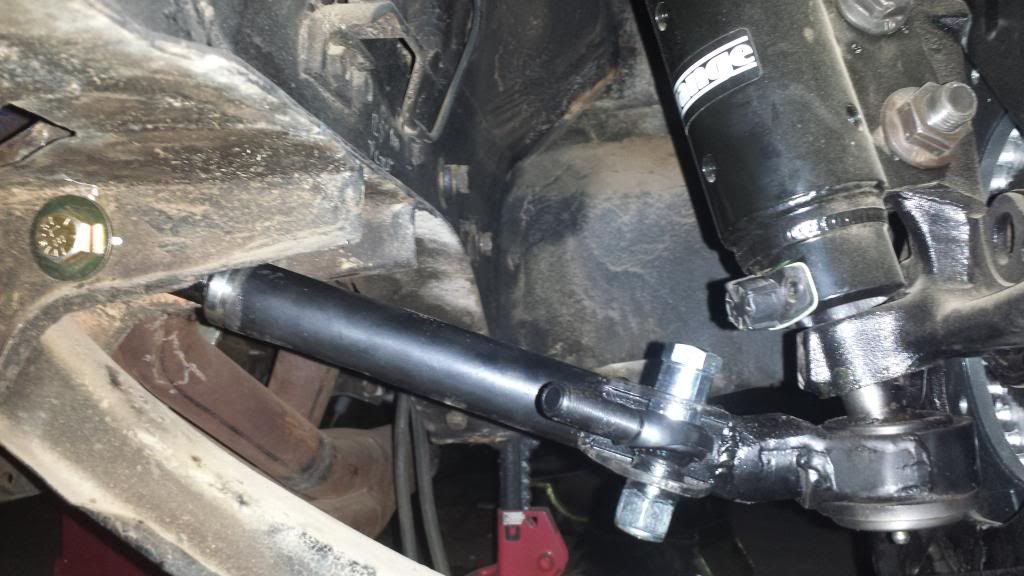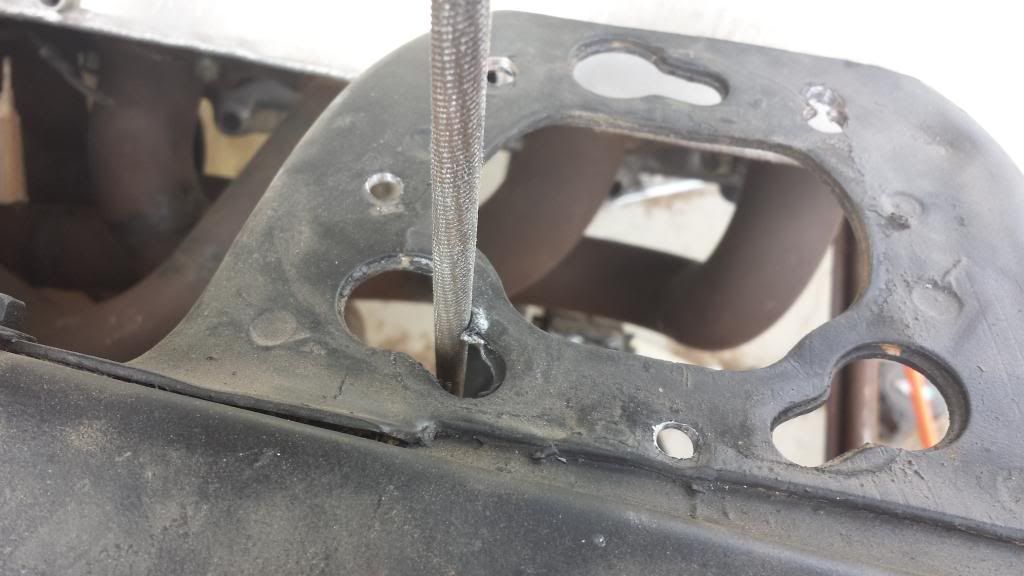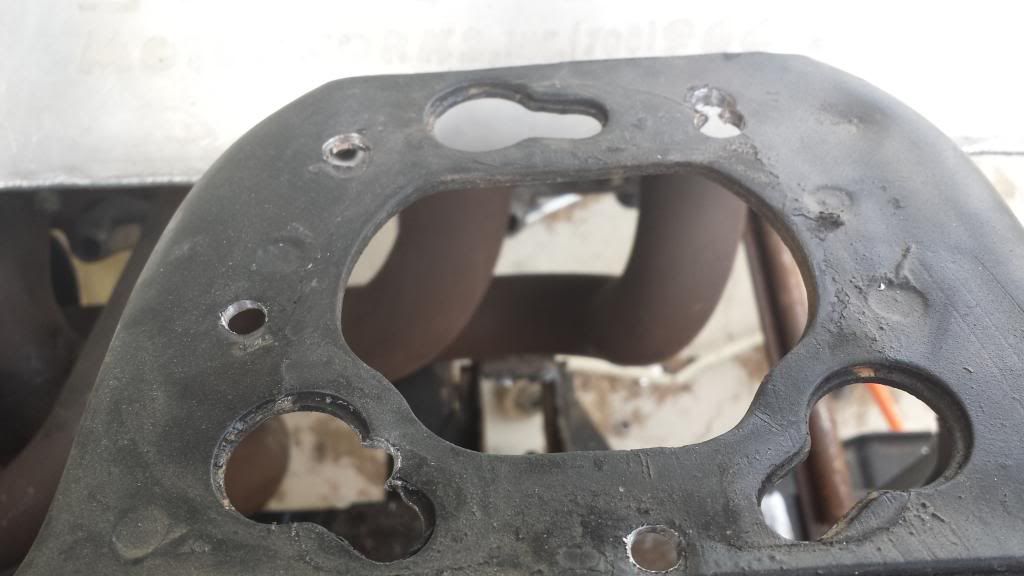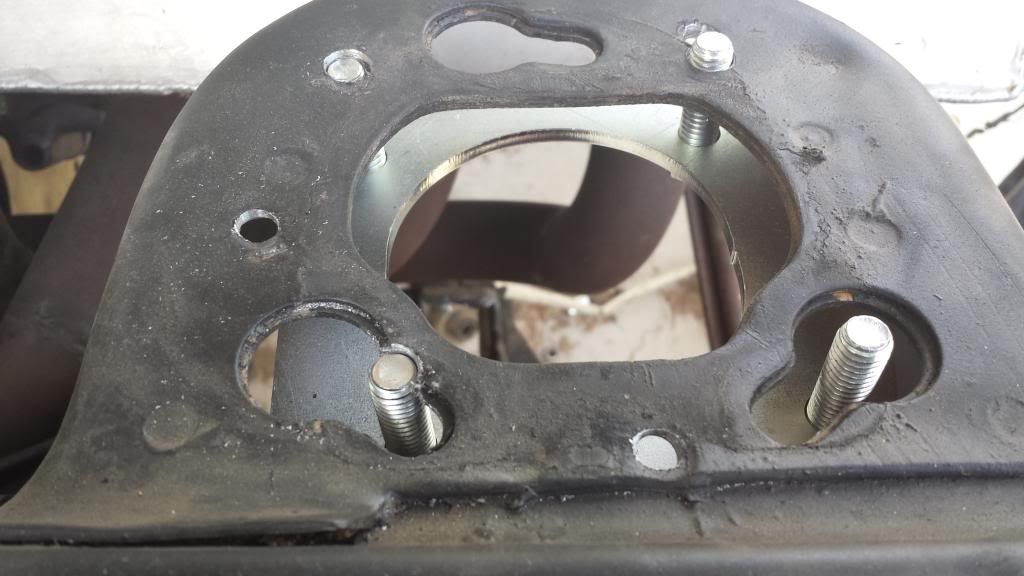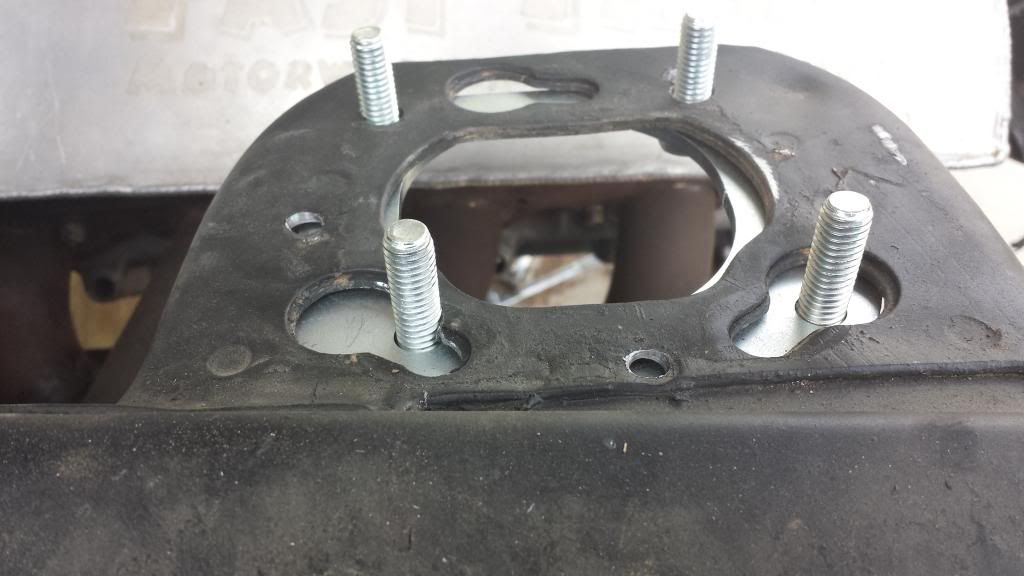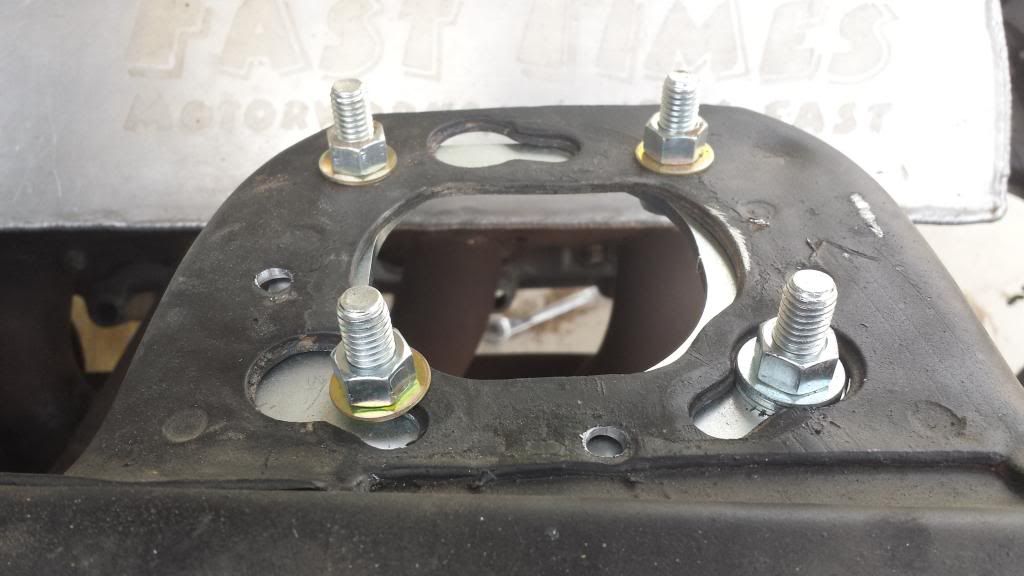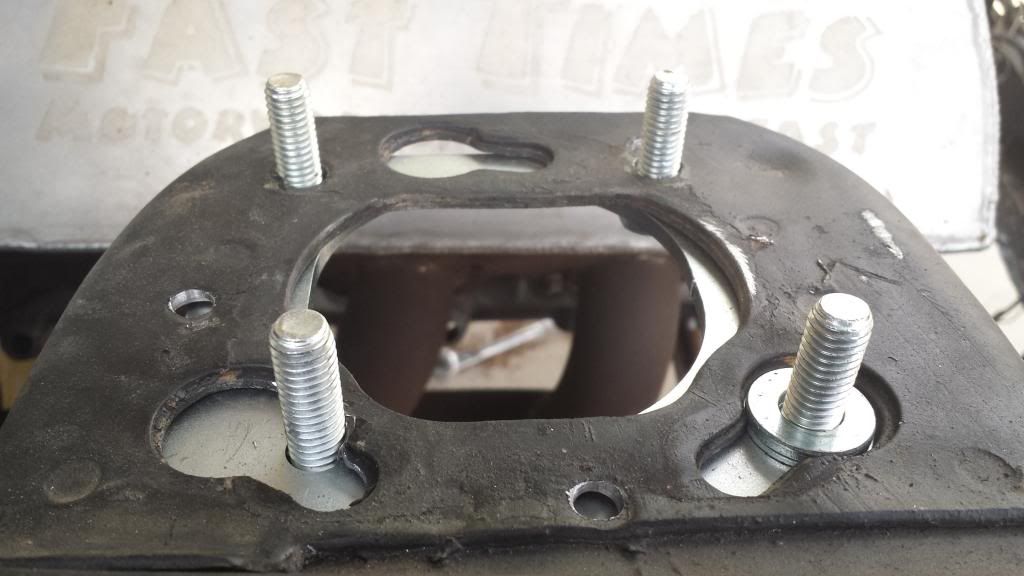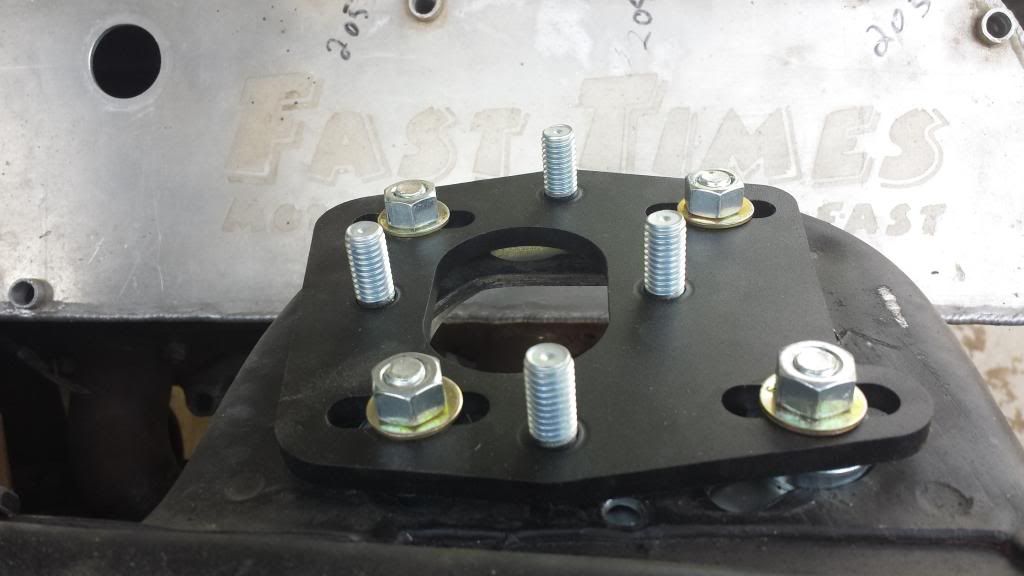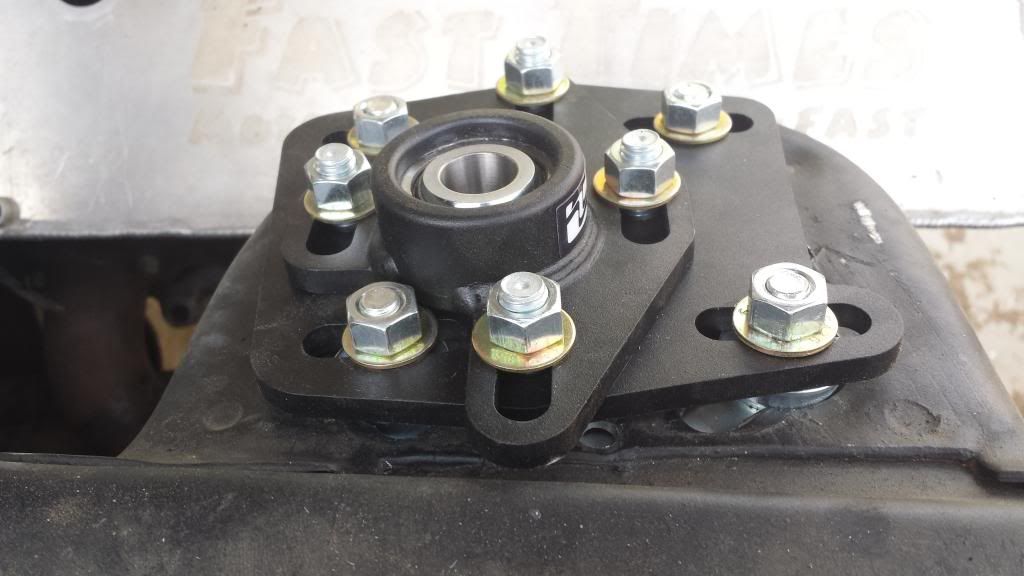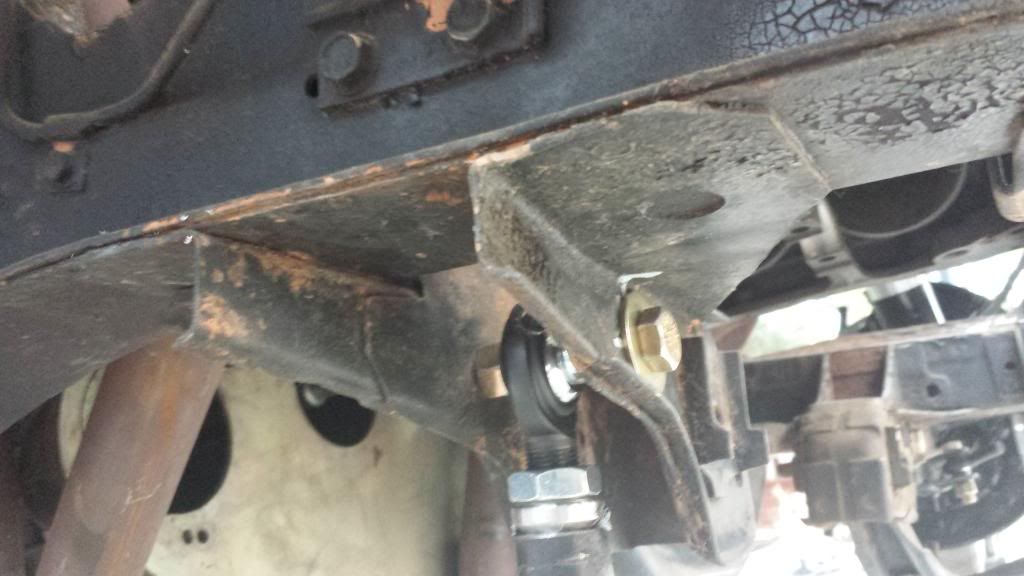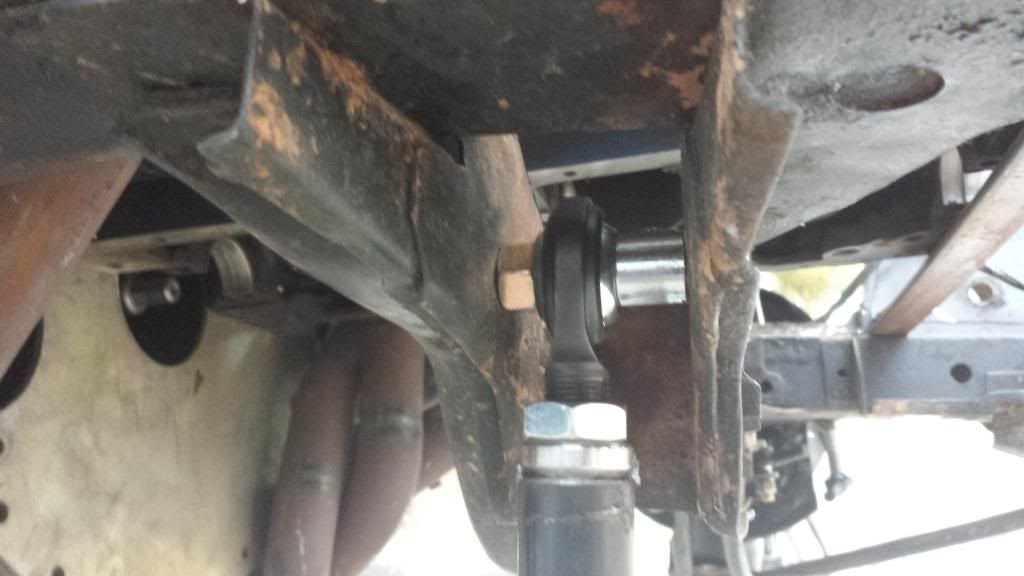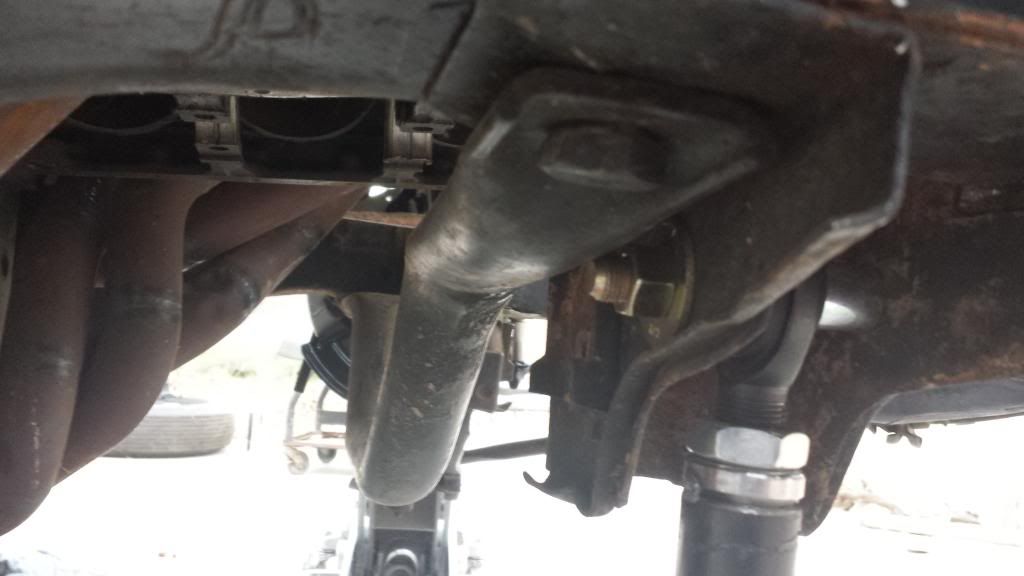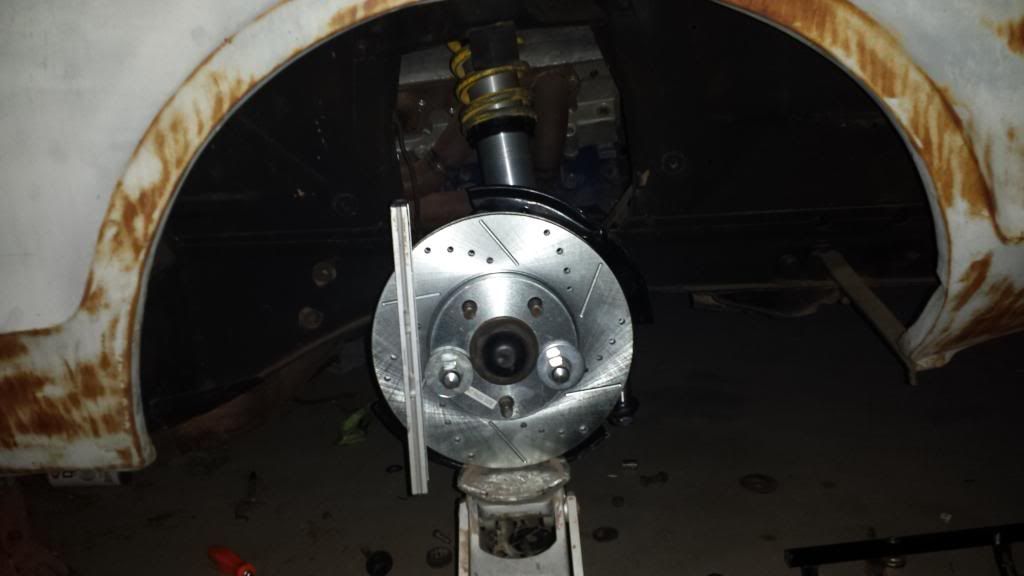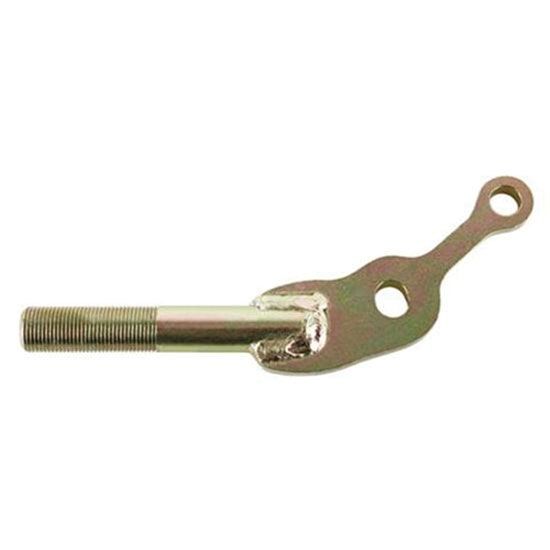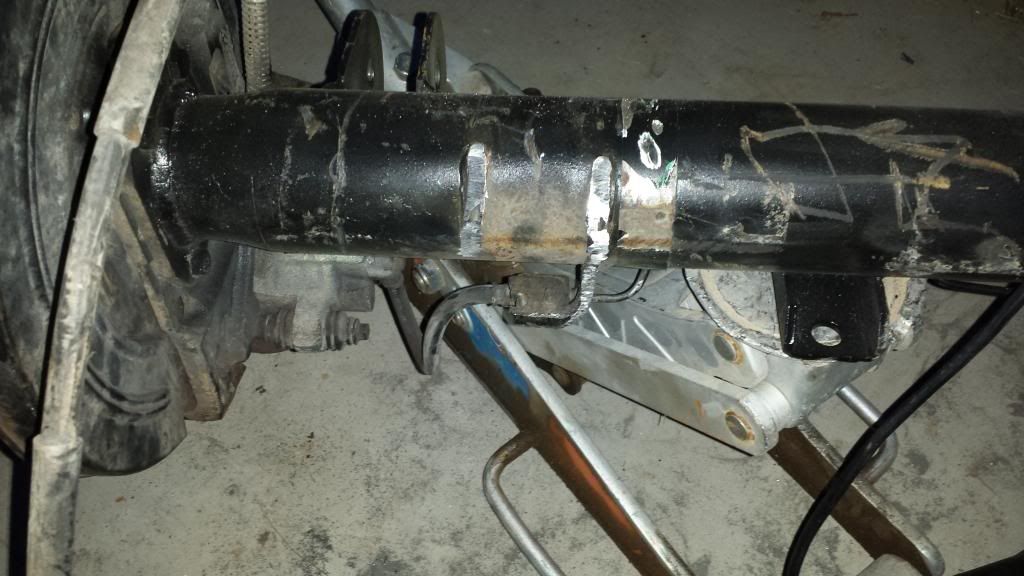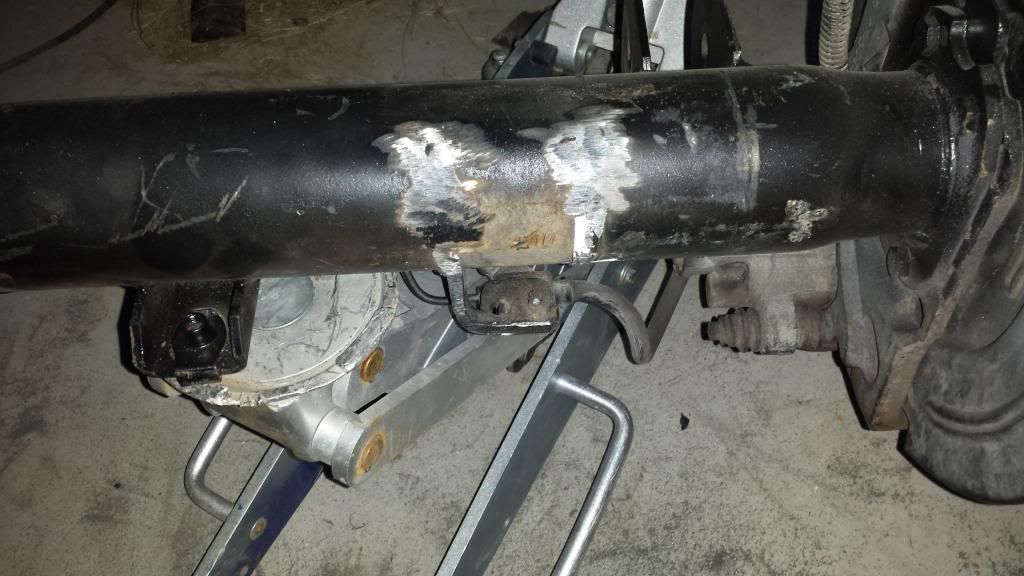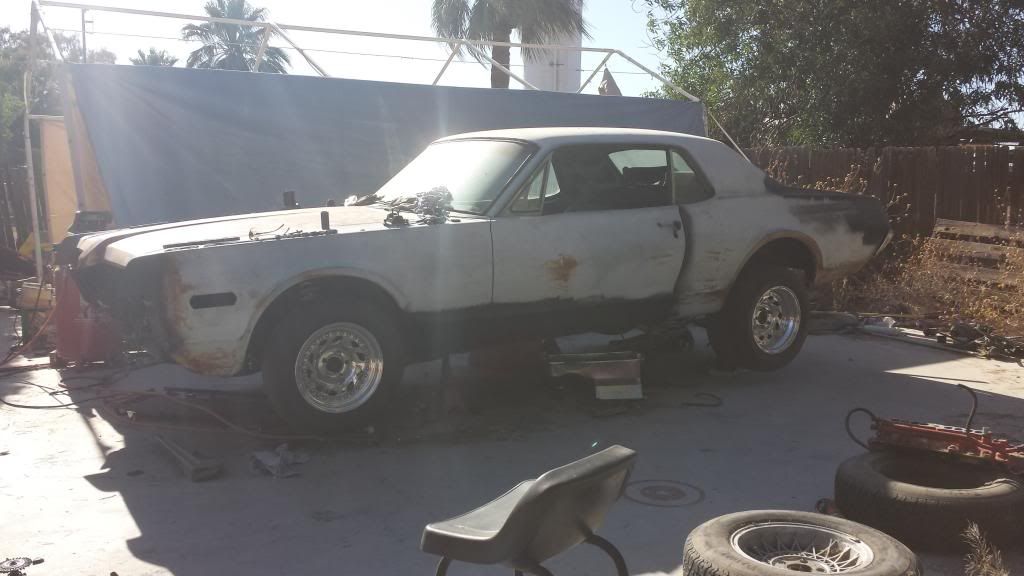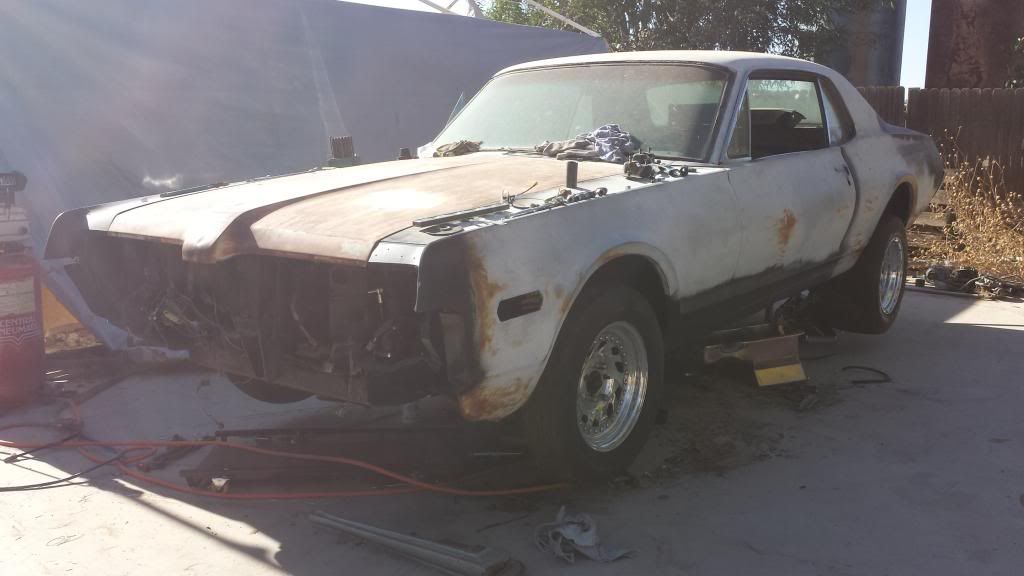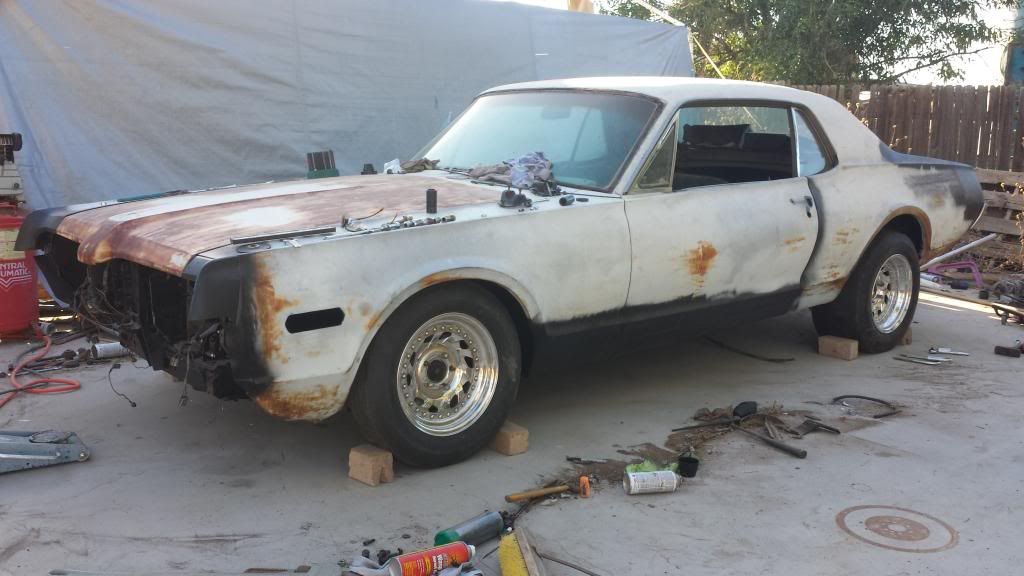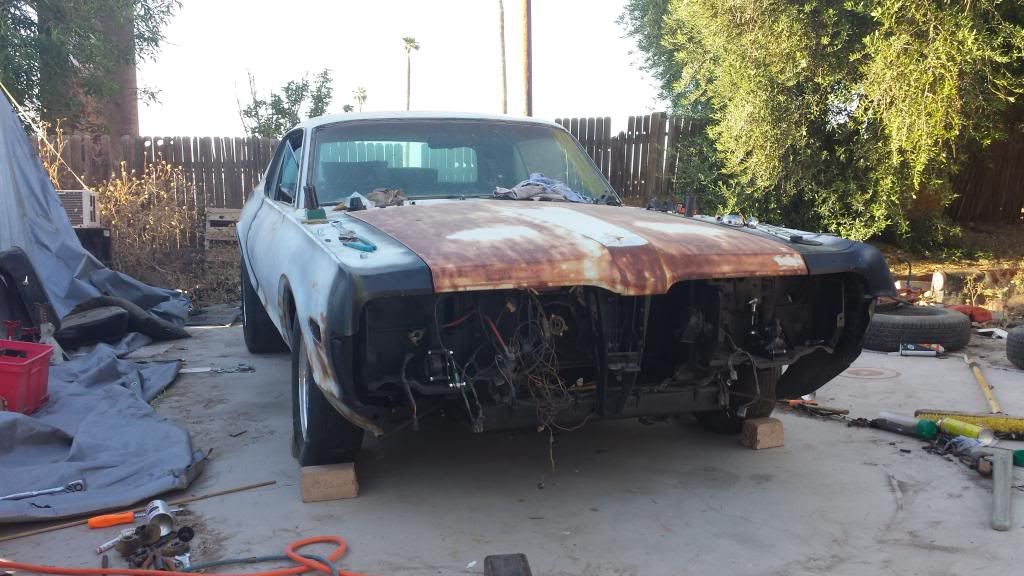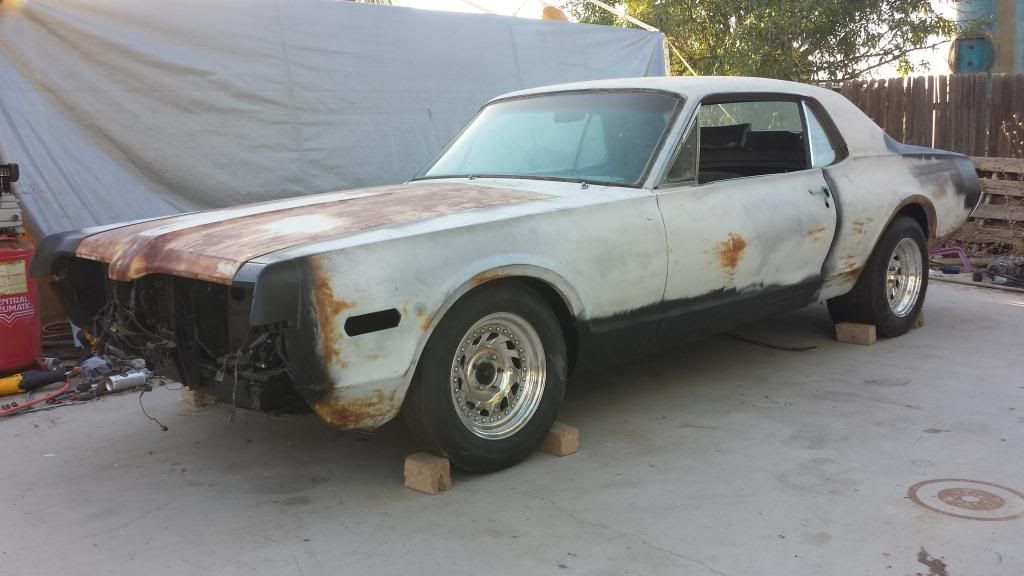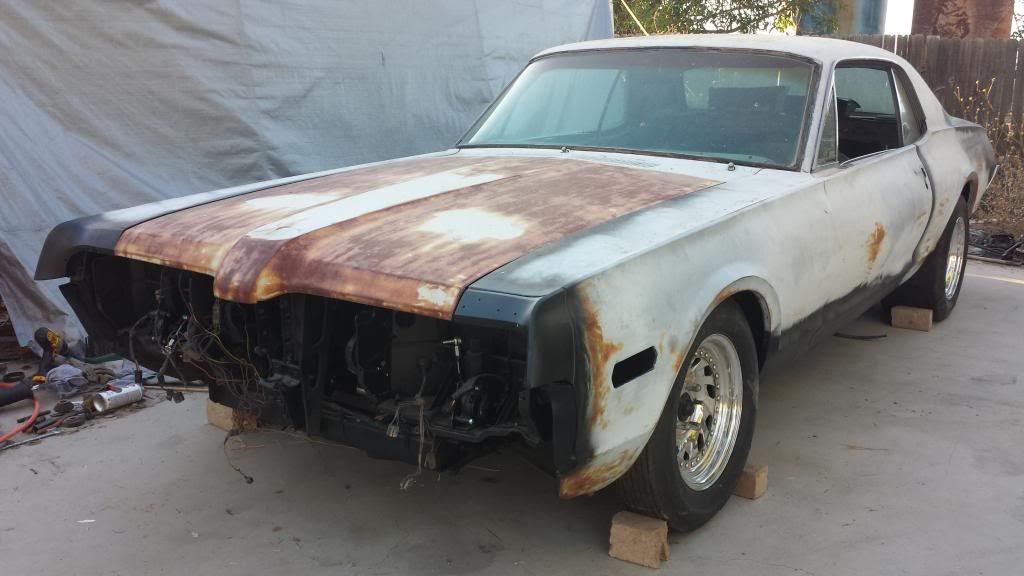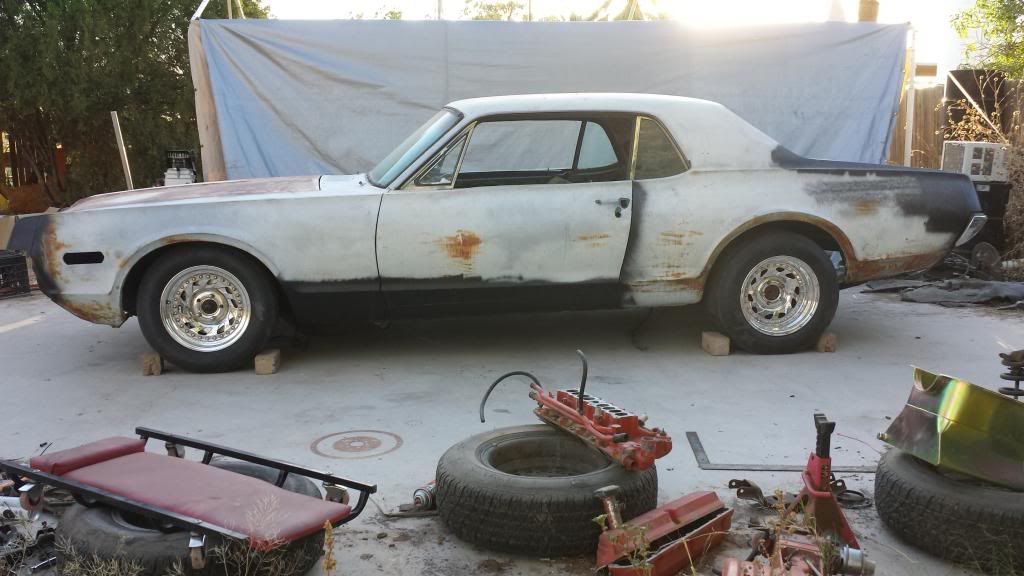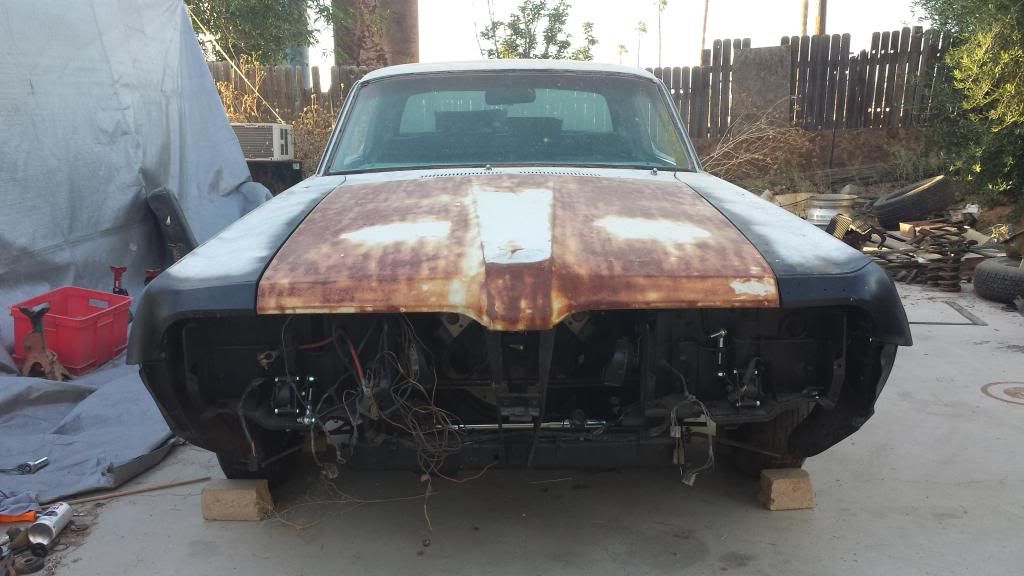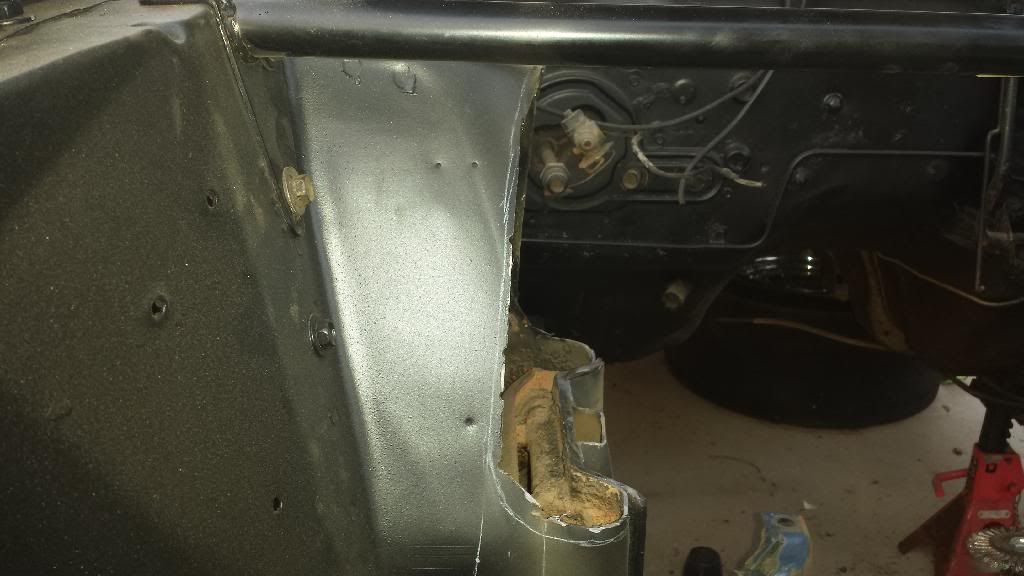

Sooo…is this considered ‘progress’?..or 'demolition? I decided it was best to just bite the bullet and get this done first, rather than spend three weeks dropping a dummy block (read: trashed 289 with no internals lol) with a transmission attached trying to get everything to fit with a minimal amount of swearing, blood, and all that other stress kinda stuff. Actually, I’ll show you a few pictures of why I decided I’m getting rid of as much of the shock towers as possible right from the get go:





This was my last 67 Mustang (during fitment…when I was done nothing touched)…same headers. The heads on this motor were high ports (.75" raised exhaust), and while the bolt pattern and port location (at least the height of the port) is the same on my current heads, I think they’re spread out just a bit wider. Thus…losing the shock towers. For your entertainment (if you’re bored), I’ll share a link to an old thread where I documented the fitment of the headers, in detail…lol. It wasn’t a lot of fun the first time around…for sure.
http://www.fordmuscleforums.com/makin-progress/482938-67-mustang-coupe-wip.html#post1473929
I’m probably going to change a few other things here as well, before welding it up. First…I may fab two brackets to run coilovers in place of the stock spring/shock/perch setup. Reason being…I have the right size threaded body coilovers sitting around from the dirt track cars…and I’ve got about 50 different sets of springs sitting around also lol. The only real benefits I expect to see from this kind of basic swap are maybe 20lbs off the front end (in a good spot!!), and more room to open up the shock towers. The top bracket will bolt under the existing upper shock bracket (which will be removed), and the bottom one will replace the spring perch. I’ll use simple stock car shock mount brackets welded to the appropriate sized plates to make the brackets. All of my shocks mount via rod ends at both the upper and lower positions.
Anyhow…that’s just something I’m kicking around…I’ve got a bit of time before I decide…but less shock tower (and thus more room!), is always a good thing.
On the cylinder head front…I should be ordering the reaming tool for my lifter bores here this week. I’m also going to be ordering my Megasquirt kit shortly as well. I’m going with the MS3x, and will be running full sequential spark and fuel (distributorless with LSx coil packs). The best part is that later, I’ll be able to run stacked injectors (2 injectors per port). The primaries will be sequential, smallish (perhaps 36’s or 42’s), mount very low, shoot basically horizontally into the port, and handle all the low load/rpm fuel supply. The secondaries will probably be 60’s, and will run off of batch fire. My biggest problem with the fuel injection setup I have at this point…is figuring out an air filtration solution which first…is capable of supplying 3000+cfm, and second…doesn’t cost $400 plus. I REALLY like the K&N sprint car air boxes (and they should be very easy to fit to this intake system), but they’re crazy expensive. I mean…$408 for JUST the freakin filter?? Seriously?! Here’s a picture:

So there’s that. Maybe I’ll try Racingjunk for a used one, lol. Any other ideas on that front would be very much appreciated.
Anyhow, there we have it. Moving along slowly but surely. I’m still hoping to have the thing running and driving by the end of summer (maybe, lol). Part of me thinks if I get it driving in the next 8mos…I’ll have really pulled something off though =p.



















